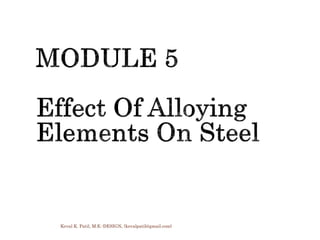The document discusses the properties and limitations of plain carbon steels compared to alloy steels, noting that while alloy steels improve hardness, corrosion resistance, and heat resistance, they are more expensive and require careful handling. It details various alloying elements like carbon, manganese, chromium, and others, highlighting their effects on the strength, toughness, and overall performance of steel. Additionally, it categorizes different types of tool steels based on their intended applications and properties, such as shock resistance and high-temperature performance.




















